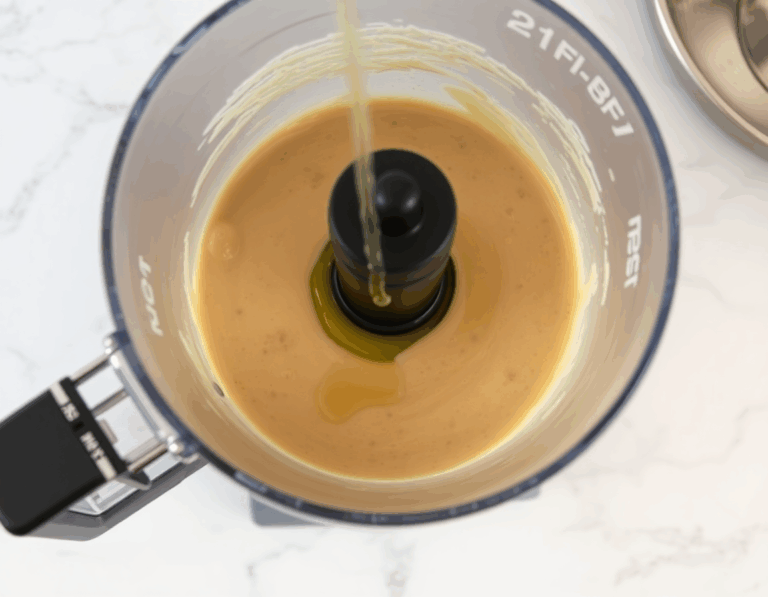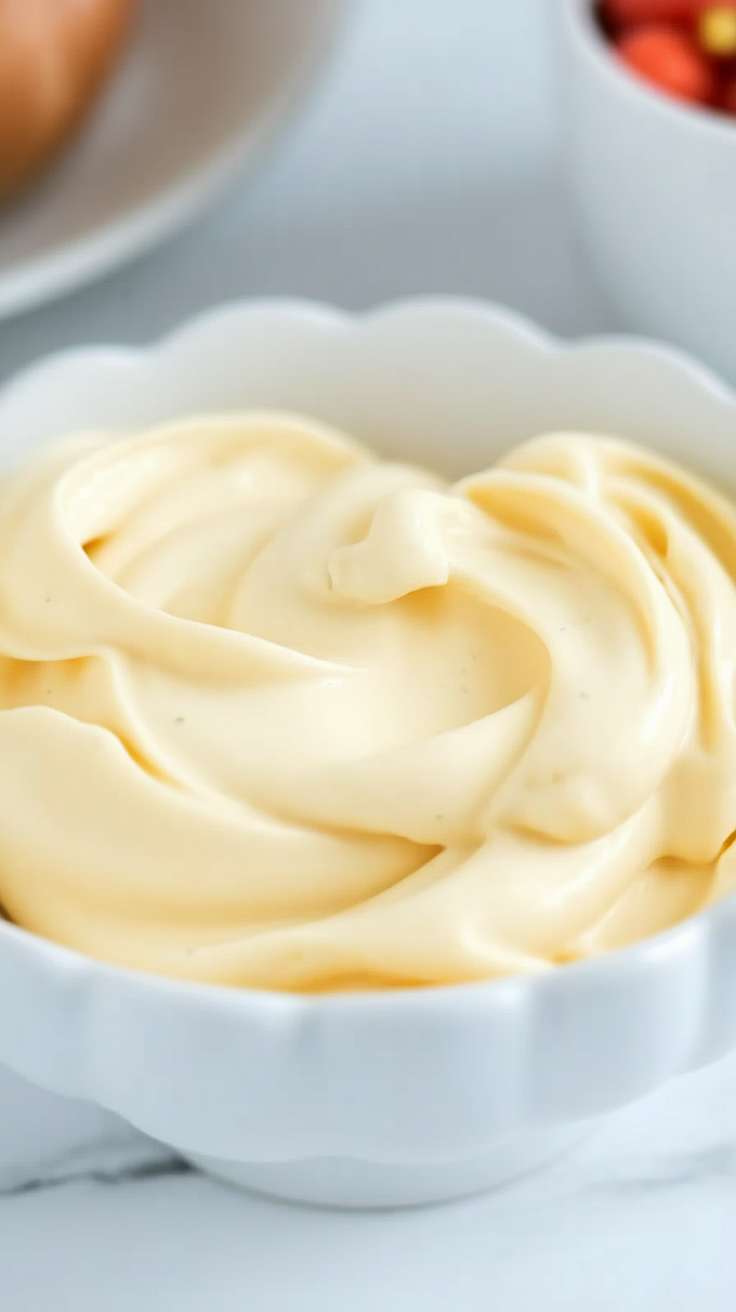Ah, mayonnaise—who knew something so simple could cause such a culinary debate? Some folks swear by store-bought, but I’m all about whipping it up fresh at home.
It’s like creating your own creamy magic potion in mere minutes! And hey, if AI can now write songs and paint pictures, surely we can manage a little homemade mayo, right?
You won’t believe how easy it is until you try it.
Steps
- Prepare your equipment by setting up the small bowl attachment in your food processor for optimal emulsification. If this is unavailable, an immersion blender or a large bowl with a whisk will also work.
- Place a whole egg into the food processor and process it for about 20 seconds. Follow by adding mustard, vinegar, and salt, then process for another 20 seconds.
- Begin incorporating the oil very slowly, starting with tiny drops, until about a quarter of it is added. This gradual addition helps ensure the mixture emulsifies properly.
- Once the mixture starts to thicken, you can add the remaining oil in a thin stream while keeping the processor running. Continue until all the oil is incorporated.
- After all the oil is added, process the mixture for an additional 10 seconds. Taste the mayonnaise and adjust the seasoning with more salt, vinegar, or lemon juice as desired.
- For the immersion blender method, place the egg, mustard, vinegar, optional lemon juice, and salt into a tall, narrow jar. Pour all the oil on top, insert the blender, and start blending from the bottom.
- As a thick mayonnaise forms at the base, gently move the blender up and down to mix in the rest of the oil until it is fully emulsified and creamy. Adjust seasoning with salt, vinegar, or lemon juice to taste.

Ingredients
- 1 large egg
- 1 tablespoon Dijon mustard
- 1 tablespoon of either red wine vinegar or white wine vinegar
- 1/4 teaspoon of fine sea salt, with more to taste if needed
- 1 cup (240ml) of safflower oil or vegetable oil
- 1 teaspoon of freshly squeezed lemon juice (optional)
Nutritional Values
Calories: 2016 | Protein: 0 g | Carbohydrate: 0 g | Dietary Fiber: 0 g | Total Sugars: 0 g | Total Fat: 224 g | Saturated Fat: 16 g | Cholesterol: 192 mg
FAQ
- How long does homemade mayonnaise last in the fridge?
- Homemade mayonnaise can be stored in the refrigerator for about two weeks. However, it often gets used up quicker due to its delicious taste.
- Can I use olive oil in my mayonnaise?
- Yes, you can use olive oil, but it can be quite strong in flavor. It’s often recommended to use a light and fruity olive oil or to replace only half of the oil in the recipe with olive oil, using a more neutral oil for the rest.
- What should I do if my mayonnaise is too thick or too thin?
- If your mayonnaise is too thick, gradually add a teaspoon or two of cold water while mixing. If it’s too thin, slowly drizzle in more oil while processing until you reach the desired consistency.
- Is it safe to use raw eggs in mayonnaise?
- Using raw eggs is common in mayonnaise recipes, but if you’re concerned about safety, use pasteurized eggs which are available in most grocery stores. Alternatively, you can pasteurize eggs at home following online tutorials.
- How can I fix broken mayonnaise?
- If your mayonnaise breaks, transfer it to a jug, clean your food processor, and blend a fresh egg yolk with a bit of vinegar or lemon juice. Gradually add the broken mayonnaise back into the processor while blending to re-emulsify.
Tips
- Add Oil Gradually for Best Results: When making mayonnaise, ensure you add the oil very slowly, especially at the beginning. This method helps achieve a stable emulsion. If you add the oil too quickly, it could result in a runny consistency.
- Choose the Right Oil: Opt for a neutral-flavored oil like safflower or sunflower oil to maintain a balanced taste. If you prefer using olive oil, consider using only half of the required amount and complement it with a neutral oil, as olive oil can be quite strong.
- Customize Your Flavors: Enhance your mayonnaise by adding roasted garlic, fresh herbs, or spices like chipotle or curry powder. This customization can add a unique twist to your homemade mayo.
- Troubleshoot Emulsions: If your mayonnaise breaks, clean your processor and start with a fresh egg yolk and a bit of vinegar or lemon juice. Slowly incorporate the broken mayo while blending to restore the emulsion.
Equipment
- Food Processor with Small Bowl Attachment – Essential for making the mayonnaise using the preferred method.
- Immersion Blender – An alternative option for making mayonnaise, especially for those who don’t have a food processor.
- Tall, Narrow Jar – Needed if using the immersion blender method to ensure proper emulsification.

